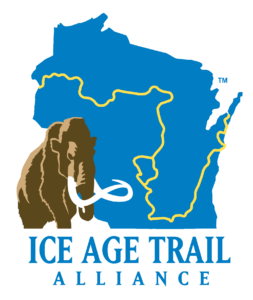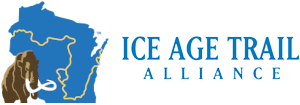By Steve Pence, Land Restoration Specialist.

Spring through fall, restored native prairies offer beautiful blooms. With its dainty bell-like flowers, columbine offers pops of red in spring. Graceful, yellow coneflowers sway among grasses in summer. And in the fall, the majestic blazing star, with its lavender-colored puffs, towers above other blooms.
Native plants like these, gracing your hikes along the Ice Age National Scenic Trail, are not a stroke of luck, but point to the intentional efforts of Ice Age Trail Alliance staff and volunteers. Through its Habitat Improvement Program, the Alliance is actively increasing the presence of native plant species on Alliance-owned preserves. This diverse array of plants supports an entire food web, creating a robust and resilient ecosystem benefiting pollinator species like bumble bees, butterflies, and even hummingbirds.


Planning Identifies Plants and Properties
Looking a year or two into the future, staff identifies properties that need a native plant boost. Then, they determine the types of native seeds required based on the area’s ecosystem. For example, if a species grows well in full sunlight, it does not make sense to collect, clean, and plant its seed in shady woodland where it won’t thrive.

Collecting and Cleaning Seeds
After that, the process of collecting the seeds is straightforward, but requires careful observation and manual labor. Desired plants within Alliance preserves are monitored to know when the seeds are mature. Then, they’re hand-picked. This process involves cutting off the tops of the plants to remove seed pods or spent flower heads. One person or 110 school-aged kids can participate, making seed collection a great opportunity for community involvement and education. Afterward, volunteers empty the bags of collected plant material into large containers—round, plastic, kiddie swimming pools are ideal—to dry it out.

Alliance Seed Shed Supports a Native Seed Nursery
In 2023, grant funding (awarded from the U.S. Fish & Wildlife Service Partners for Fish and Wildlife Program) to the Alliance and its local U.S. Fish & Wildlife Service partners addressed the need for, and high cost of, propagating native plants on both public and private land. The Alliance purchased, assembled, and tested seed processing equipment—a hammer mill and a fanning mill—at its “Seed Shed” established on the Alliance-owned Marshview Preserve near Lodi, Wis.
Now, plant material gathered during seed collection events are kept in the Alliance seed shed until it’s time to clean and separate the seed from the debris. The hammer mill breaks up the debris and seed pods, freeing the seeds. Then, the material is run through the fanning mill to separate the seed from the chaff. This process leaves clean seeds ready to be planted on the landscape.
Each machine has specific settings to clean the seed, depending on the seed type. Some species, like Culver’s root, have tiny seeds that look like dust. It takes about 800,000 Culver’s root seeds to make up an ounce. Compare that to a compass plant seed, about the size of your pinky nail; it only takes 660 seeds to make an ounce.


Success Across 63 Alliance-Owned Acres
During 2023, the Alliance’s first year with the seed processing equipment, more than 70 native species of seed was collected, cleaned, and planted on 63 acres of habitat, including prairie, savanna, and wetlands. The efficiency and effectiveness of the new equipment provided a significant boost to Alliance restoration efforts. In some cases, this added diversity to an established habitat; in others, it was the first planting to establish a new prairie!
Seeds are planted by volunteers of all ages who toss (broadcast) handfuls of seeds into the areas where they are needed most. This work occurs in late winter or early spring to mimic the natural process. When seeds drop from plants in the fall, spring’s melting snow draws them into the soil. The seeds’ size determines the depth to which they sink for future germination.
Get Involved!
Seed-collecting (and seed-planting) events offer excellent opportunities to learn about habitat restoration while doing work to benefit native ecosystems.
Keep in mind, seed harvesting is weather-dependent and sometimes happens on short notice. Seed collection typically starts at the end of June and runs through the fall when most seeds have matured.
To volunteer for this type of habitat improvement work, contact Steve Pence, the Alliance’s Land Restoration Specialist at: steve@iceagetrail.org.

